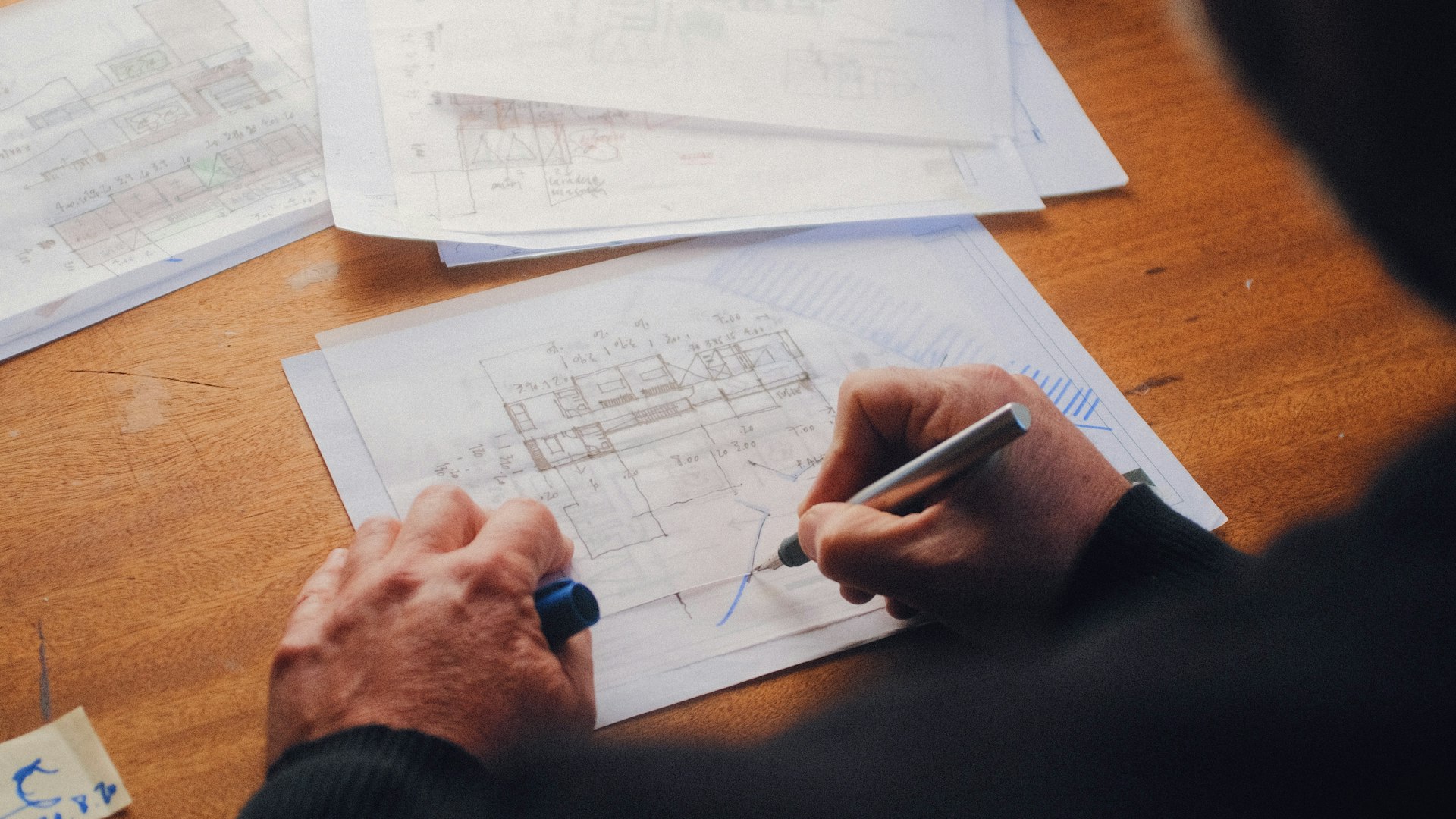Understanding User-Friendly Website Design When I delve into the concept of user-friendly website design, I’m exploring the art and science of making websites not only aesthetically pleasing but also intuitively easy to use. It’s about creating an online environment where visitors can find what they’re looking for without frustration, a place where navigation feels as […]
When I delve into the concept of user-friendly website design, I’m exploring the art and science of making websites not only aesthetically pleasing but also intuitively easy to use. It’s about creating an online environment where visitors can find what they’re looking for without frustration, a place where navigation feels as natural as breathing. User-friendly design is a comprehensive approach that considers various elements such as layout, typography, colour schemes, and interactive features to ensure a seamless experience for the user.
The importance of user experience (UX) in the digital realm cannot be overstated. In an age where the internet is saturated with countless websites, having a user-friendly interface is a key differentiator that can make or break a business. Statistics show that a well-designed user interface could raise a website’s conversion rate by up to 200%, and better UX design could yield conversion rates up to 400%. This is because a positive experience on a website significantly affects customer retention and conversion rates. Users are more likely to return to a website that is easy to navigate and provides them with a hassle-free experience. Moreover, a user-friendly website is likely to generate positive word-of-mouth, leading to increased traffic and potential sales.
To illustrate the essence of user-friendly design, let’s consider a table that contrasts the key features of user-friendly and user-unfriendly websites:
| User-Friendly Website | User-Unfriendly Website |
|---|---|
| Clear and intuitive navigation | Confusing or complex navigation |
| Fast loading times | Slow loading times |
| Responsive design for all devices | Poor performance on mobile or tablets |
| Accessible content for all users | Content not accessible to users with disabilities |
| Consistent and appealing visual design | Inconsistent and unattractive visuals |
| Clear call-to-action buttons | Ambiguous or missing calls-to-action |
The table above succinctly encapsulates the core attributes of a user-friendly website. It’s not just about the visual appeal; it’s about creating a coherent journey for the user from the moment they land on the homepage to the point where they complete an action, whether it’s making a purchase, signing up for a newsletter, or simply finding information.

The foundation of a user-friendly website is built upon four key pillars: simplicity, navigation, responsiveness, and speed. Each of these components plays a crucial role in delivering an experience that not only meets but exceeds user expectations. Simplicity in website design is about decluttering the interface and presenting information in a clean and organised manner. It’s about reducing cognitive load so that users can focus on what’s important without being overwhelmed by unnecessary elements.
Navigation is the roadmap of a website. It guides users through the site’s content, allowing them to easily find what they’re looking for. A well-structured navigation system uses intuitive menus, logical page hierarchies, and clear labels to help users navigate with confidence. Responsiveness refers to a website’s ability to adapt to different screen sizes and devices. With the increasing use of mobile devices to access the internet, a responsive design ensures that users have a consistent experience, regardless of how they’re accessing the site.
Speed is another critical factor. In our fast-paced digital world, users expect websites to load quickly. A delay of even a few seconds can lead to frustration and, ultimately, users abandoning the site. In fact, studies have shown that 40% of people will leave a website if it takes more than 3 seconds to load. This highlights the importance of optimising website speed to keep users engaged.
To better understand how these pillars support a user-friendly website, let’s examine a table that outlines their contributions to user experience:
| Pillar | Role in User-Friendly Design | Impact on User Experience |
|---|---|---|
| Simplicity | Minimises distractions and focuses on content relevance. | Users find information quickly and easily, increasing satisfaction. |
| Navigation | Provides a clear path through the website’s content. | Users feel in control, reducing bounce rates and improving retention. |
| Responsiveness | Ensures the website is accessible on any device. | Users have a seamless experience, boosting loyalty and return visits. |
| Speed | Delivers content quickly without delays. | Users stay engaged, increasing the likelihood of conversion. |
These pillars are not standalone elements but are interconnected, each reinforcing the other to create a holistic user-friendly environment. By prioritising these aspects of design, businesses can ensure that their website not only attracts users but also provides them with an experience that encourages them to stay, explore, and ultimately take action.

In today’s digital landscape, the significance of mobile-friendly website design cannot be understated. With over 50% of global website traffic now coming from mobile devices, it’s clear that designing for mobile is not just an option, but a necessity. The user experience on mobile devices is paramount, as a staggering 85% of adults believe that a company’s mobile website should be as good or better than their desktop website. This expectation places immense importance on the principles of mobile-friendly design, which aim to provide an optimal browsing experience regardless of device.
Mobile-friendly design is characterised by several key principles. Firstly, it must feature a responsive layout that adapts seamlessly to different screen sizes, ensuring content is easily readable and navigable without the need for zooming or horizontal scrolling. Secondly, touch-friendly interfaces with large, easy-to-tap buttons are essential to accommodate the fingertip navigation inherent to mobile devices. Thirdly, mobile design should prioritise speed, as mobile users often rely on cellular data with varying connection speeds. Optimising images and minimising code can significantly reduce load times, which is crucial since 53% of mobile site visits are abandoned if pages take longer than 3 seconds to load.
To illustrate the impact of mobile-friendly design on user experience, consider the following table comparing the attributes of mobile-friendly and non-mobile-friendly websites:
| Mobile-Friendly Website | Non-Mobile-Friendly Website |
|---|---|
| Responsive design that adapts to any screen size | Fixed-width layout that may not fit well on smaller screens |
| Large, easily clickable buttons | Small, difficult-to-tap buttons or links |
| Optimised images and fast loading times | Large images and slow loading times |
| Minimalist design with prioritised content | Cluttered design with non-essential content |
| Accessible menus and intuitive navigation | Complex menus and challenging navigation |
The contrast between mobile-friendly and non-mobile-friendly websites is stark, with the former providing a user experience that is conducive to engagement and conversion, while the latter often leads to frustration and site abandonment. By embracing the principles of mobile-friendly design, businesses can ensure they cater to the vast and growing audience of mobile users, ultimately enhancing their online presence and competitive edge.

The symbiotic relationship between SEO and user-friendly website design is pivotal for the success of any online presence. SEO friendly website design not only helps a site to rank higher in search engine results but also enhances the user experience, which in turn can lead to better engagement and conversion rates. It’s a well-established fact that search engines favour websites that provide a high-quality user experience, with Google’s algorithm updates increasingly focusing on user-centric metrics such as mobile-friendliness, page speed, and interactivity.
Integrating SEO into a user-friendly design does not mean sacrificing aesthetics or usability for the sake of search engine rankings. On the contrary, it involves a strategic approach that aligns both objectives. For instance, a clear and logical site structure not only helps users navigate your website effortlessly but also allows search engines to crawl and index your content more effectively. Similarly, optimising on-page elements like meta tags, headings, and alt text improves accessibility for users with disabilities and also serves as key signals for search engine algorithms.
Here are some practical tips for weaving SEO friendly elements into a user-friendly website design:
By following these tips, you can create a website that not only ranks well in search engines but also provides an exceptional user experience. The table below highlights the dual benefits of SEO friendly design elements for both users and search engines:
| SEO Friendly Element | User Benefit | Search Engine Benefit |
|---|---|---|
| Mobile Optimisation | Accessible on any device | Meets mobile-first indexing criteria |
| Site Speed | Quick access to content | Positive ranking factor |
| Descriptive URLs | Understandable navigation | Enhanced content relevancy |
| Clear Headings | Easy content scanning | Improved content structure |
| Internal Linking | Seamless content discovery | Better site architecture understanding |
| Intuitive Navigation | Effortless site exploration | Lower bounce rates |
| Quality Content | Engaging and informative | Signals content value |
The integration of SEO and user-friendly design is not a one-time task but an ongoing process that requires regular updates and refinements to keep up with the evolving algorithms and user preferences. By maintaining this balance, you can ensure that your website remains both visible and valuable to your target audience.

As a content writer with a keen eye on the digital landscape, I’ve observed that the realm of website design is perpetually evolving. Staying abreast of the latest trends is not just about keeping your website looking fresh; it’s about ensuring that the user experience remains at the cutting edge. In recent years, we’ve seen a surge in creative and modern design elements that have redefined how users interact with websites. From the incorporation of bold typography and vibrant colours to the integration of augmented reality (AR) and virtual reality (VR), these trends are setting the stage for a more immersive and engaging online experience.
One of the standout trends is the use of micro-interactions. These subtle animations and visual cues respond to user actions and provide feedback, enhancing the sense of interaction and engagement with the website. Another trend is the use of asymmetrical layouts, which break free from the traditional grid system to create a more dynamic and visually interesting composition. This can help guide the user’s eye across the page in a more natural and engaging way.
Minimalism continues to be a popular trend, with many websites opting for a clean and uncluttered look that prioritises content and functionality. This approach aligns with the principles of user-friendly design by reducing distractions and focusing the user’s attention on the most important elements. Additionally, the use of dark mode, which offers a low-light user interface that is easier on the eyes, has gained traction as users seek more comfortable browsing experiences, especially in low-light environments.
To provide a clearer picture of how these trends contribute to an enhanced user experience, let’s examine a table that outlines the benefits of each trend:
| Design Trend | Description | User Experience Benefit |
|---|---|---|
| Micro-interactions | Small animations that respond to user actions. | Increases engagement and provides intuitive feedback. |
| Asymmetrical Layouts | Designs that eschew the traditional grid format. | Creates visual interest and guides the user’s eye. |
| Minimalism | Clean, content-focused design with minimal elements. | Reduces cognitive load and highlights key content. |
| Dark Mode | A low-light user interface option. | Improves visual ergonomics by reducing eye strain. |
These modern design trends are not merely aesthetic choices; they are strategic decisions that can significantly improve the usability and appeal of a website. By incorporating these elements, designers and business owners can create websites that not only look great but also provide a user experience that is intuitive, engaging, and memorable.

A website design portfolio is more than just a collection of screenshots; it’s a testament to a designer’s skill, style, and experience. In my professional journey, I’ve found that a well-crafted portfolio is instrumental in establishing credibility and trust with potential clients. It’s the digital equivalent of a first impression, and as we all know, first impressions are paramount. A portfolio allows designers to showcase their best work, highlight their expertise, and convey their design philosophy. It’s not just about what you can do; it’s about how you approach problems, innovate, and deliver solutions that meet client needs and exceed user expectations.
Professional website design portfolios often include case studies that provide insight into the design process. These case studies can detail the challenges faced, the strategies employed, and the outcomes achieved, offering potential clients a window into the designer’s approach to problem-solving. Statistics suggest that portfolios with case studies can increase client engagement, as they demonstrate the designer’s ability to apply their skills in real-world scenarios.
To illustrate the impact of a professional portfolio, let’s compare the elements of a well-curated portfolio to one that’s less effective:
| Well-Curated Portfolio | Less Effective Portfolio |
|---|---|
| High-quality images and visuals | Poor resolution images |
| Detailed case studies with context | Vague descriptions with no background |
| Clear explanation of design decisions | Lack of rationale for design choices |
| Testimonials and client feedback | No client endorsements or reviews |
| User-centric design showcased | Focus on aesthetics over usability |
| Easy navigation through the portfolio | Cluttered layout and confusing navigation |
A professional website design portfolio is a powerful tool for demonstrating a designer’s capabilities and for businesses to attract and reassure clients. It reflects a commitment to quality and an understanding of the importance of user experience. By presenting examples of their work in a structured and engaging way, designers and design agencies can effectively communicate their value proposition and foster confidence in their ability to deliver exceptional website design services.

Choosing the right website design agency or company is a pivotal decision for any business owner looking to establish a robust online presence. The agency you select will be responsible for crafting the digital face of your business, and as such, it’s essential to choose a partner that aligns with your vision, values, and objectives. In my experience, the criteria for selecting a website design agency should include their portfolio quality, client testimonials, industry experience, technical expertise, and the range of services they offer.
A strong portfolio demonstrates an agency’s capability to deliver diverse and high-quality work. Client testimonials and case studies provide insight into their reliability and the success of their projects. Industry experience ensures they have a deep understanding of your market and can tailor the design to your audience’s needs. Technical expertise is crucial for implementing the latest web technologies and ensuring your website is future-proof. Lastly, a full range of services, from design to development to post-launch support, indicates a comprehensive approach to your website’s lifecycle.
The benefits of working with a professional agency for custom website design are manifold. A custom design means that your website will be unique to your brand, setting you apart from competitors. Professionals bring a level of expertise and creativity that can transform your website from a mere online brochure to a powerful business tool. They can also ensure that your website is scalable, secure, and optimised for search engines from the outset. Moreover, agencies often have multidisciplinary teams, meaning they can offer integrated solutions that include branding, SEO, and marketing strategies.
To aid in the selection process, here’s a table that outlines the key criteria to consider when choosing a website design agency:
| Criteria | Description | Why It’s Important |
|---|---|---|
| Portfolio Quality | Diversity and quality of previous work. | Indicates the agency’s design capabilities and experience. |
| Client Testimonials | Feedback from previous clients. | Provides real-world evidence of reliability and success. |
| Industry Experience | Knowledge of your specific market. | Ensures the design will resonate with your target audience. |
| Technical Expertise | Proficiency in modern web technologies. | Crucial for building a cutting-edge, future-proof website. |
| Service Range | Comprehensive services from design to support. | Offers a holistic approach to your website’s lifecycle. |
In conclusion, selecting the right website design agency is a strategic investment in your business’s future. By partnering with a team of professionals, you can ensure that your website not only looks stunning but also functions flawlessly, engages your audience, and supports your business goals.

Ecommerce website design is a unique beast in the digital design world. It requires a keen understanding of the online shopper’s psyche and a meticulous approach to creating a seamless shopping experience. As an expert in SEO and user experience, I’ve seen firsthand the impact that a well-designed ecommerce site can have on a business’s bottom line. User-friendly design considerations for ecommerce websites include clear product categories, high-resolution product images, easy-to-use shopping carts, and a straightforward checkout process. These elements are crucial because they contribute to a seamless flow, which is essential for encouraging purchases and reducing cart abandonment rates.
The importance of a seamless shopping experience cannot be overstated. Statistics show that a one-second delay in page load time can result in a 7% reduction in conversions. This is why ecommerce sites must be optimised for speed and efficiency. Additionally, providing detailed product information and customer reviews can significantly influence buying decisions, as 88% of consumers trust user reviews as much as personal recommendations. Furthermore, mobile responsiveness is critical, with over half of all ecommerce revenue being generated through mobile devices.
To highlight the key user-friendly design considerations for ecommerce websites, let’s examine a table that contrasts the features of a user-friendly and a non-user-friendly ecommerce site:
| User-Friendly Ecommerce Site | Non-User-Friendly Ecommerce Site |
|---|---|
| Fast loading pages | Slow loading pages that frustrate shoppers |
| High-resolution images and zoom functionality | Low-quality images that don’t showcase products |
| Clear, concise product information and reviews | Lack of product details and customer feedback |
| Easy navigation with well-defined categories | Confusing category structure |
| Simple and secure checkout process | Complex checkout that leads to cart abandonment |
| Mobile-friendly design | Poor mobile experience |
A user-friendly ecommerce website design is about creating an environment where shoppers can enjoy a pleasant, hassle-free shopping experience. By focusing on these design considerations, businesses can ensure that their ecommerce platform not only attracts customers but also provides them with the convenience and confidence to make purchases, ultimately leading to increased sales and customer loyalty.

As a business owner, investing in a website is a crucial step towards establishing an online presence. However, the notion that high-quality website design comes with an exorbitant price tag is a common misconception. I’ve learned through my experience that with careful planning and strategic decision-making, it’s entirely possible to achieve a balance between affordability and quality in website design services. Budgeting for website design should involve a clear understanding of your business needs, prioritising essential features, and being open to scalable solutions that allow your website to grow with your business.
To ensure you’re getting the best value for your investment, consider the following tips: define the scope of your project clearly to avoid scope creep, research and compare different website design service providers, opt for a content management system (CMS) that allows you to manage your website content without constant developer intervention, and look for design packages that offer post-launch support and maintenance. Remember, a well-designed website is an asset that can drive business growth, so consider the long-term benefits over the initial costs.
Balancing affordability with quality means understanding where to allocate your budget to get the best return on investment. For instance, investing in a responsive design is non-negotiable in today’s mobile-first world, while custom animations might be an area where you can cut costs without significantly impacting user experience. Additionally, leveraging pre-designed templates and themes can provide a cost-effective foundation that can be customised to suit your brand, saving on development time and costs.
To illustrate the different options available to business owners, let’s look at a comparison chart of website design service packages:
| Service Package | Features | Price Range |
|---|---|---|
| Basic | Pre-designed template, responsive design, basic SEO | £500 – £1,500 |
| Standard | Custom design, CMS, advanced SEO, social media integration | £1,500 – £5,000 |
| Premium | High-end custom design, e-commerce functionality, ongoing support | £5,000 – £10,000+ |
The table above provides a general overview of what you might expect at different price points. It’s important to note that prices can vary widely based on the complexity of the design, the experience of the service provider, and the specific needs of your business. By understanding these factors and following the tips provided, you can make informed decisions that lead to an affordable yet high-quality website design that serves your business goals and provides a positive return on investment.

In my professional journey as a content writer and SEO specialist, I’ve witnessed the transformative power of effective website design in driving business growth. A well-designed website can serve as a catalyst for brand expansion, customer engagement, and increased revenue. The role of website design in business growth is substantiated by numerous case studies where businesses have seen significant improvements in metrics such as conversion rates, time on site, and overall sales following a website redesign.
For instance, a case study involving an e-commerce retailer reported a 35% increase in sales after revamping their website with a focus on user experience and mobile responsiveness. Another case study from a B2B service provider showed a 60% increase in leads after redesigning their site to include clearer calls-to-action and streamlined navigation. These examples underscore the direct correlation between thoughtful website design and business performance.
The return on investment (ROI) of professional website design is often reflected in tangible business outcomes. Investing in high-quality website design services can lead to an average increase in conversion rates of up to 200%, according to industry data. This is because a professional website design not only attracts visitors but also effectively guides them through the conversion funnel, turning prospects into customers.
To quantify the impact of website design on business growth, let’s examine a table that compares business metrics before and after a website redesign:
| Business Metric | Pre-Redesign | Post-Redesign | Percentage Increase |
|---|---|---|---|
| Conversion Rate | 1.5% | 3.5% | 133% |
| Time on Site | 2 minutes | 5 minutes | 150% |
| Sales | £50,000/month | £80,000/month | 60% |
| Leads Generated | 100/month | 200/month | 100% |
The table clearly illustrates the positive impact that a professional website redesign can have on key business metrics. By enhancing the user experience and aligning the website’s design with business objectives, companies can unlock their full online potential and experience substantial growth.
